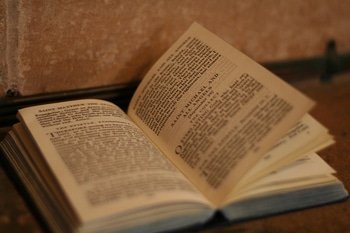The Secretary-General of the Anglican Communion, Canon Kenneth Kearon, preaching earlier this month in Dublin’s Christ Church Cathedral on the topic of the 350th anniversary of the Book of Common Prayer, described it as an “iconic” Prayer Book that had shaped Anglican worship and teaching since 1662.

He said that the Reformation in continental Europe in the 16th and 17th centuries had caused “enormous religious turmoil and ferment in England and, to a lesser extent, in Ireland”. Canon Kearon noted how, in England, Reformation principles eventually had been incorporated into Church life, with the Church seeking to preserve much of its ancient order, while also adopting many of the new religious ideas and concepts from continental Europe.
He continued: “Central to these reforms would be a common prayer book for all the people, expressed in the vernacular. While a noble ideal, the task proved to be far more difficult. Many versions and editions were put forward with varying degrees of success—most notably the prayer books of 1549 and 1552—but it was not until 1662 that a Book of Common Prayer emerged which met the needs and caught the imagination of those who sought to express the new reformed faith in a widely acceptable form of worship.”
Addressing the questions of how the 1662 Prayer Book had achieved what had proved so difficult for previous generations, and what had made it not only acceptable in its own time but also a classic of liturgy which shaped worship and faith for centuries to come, Canon Kearon said three broad reasons could be given.
First, he referred to the way it had addressed matters of religious controversy at the time: “The Book of Common Prayer didn’t seek compromise between opposing positions; instead, it sought to include very diverse positions into one liturgical rite. The Book is profoundly inclusive,” he observed.
Second, Canon Kearon described the Book of Common Prayer as “a very practical teaching and pastoral resource”, citing the “simple, dignified language of the marriage service” as expressing Christian teaching on marriage “very succinctly”.
Third, he said that the language of the 1662 Prayer Book “develops the imagination of the worshipper”, and noted how the services of Morning and Evening Prayer “resonate with biblical imagery and phrases”.
Canon Kearon noted how Anglicans describe the Book of Common Prayer as a ‘formulary’—that is, “a document which expresses the teaching and practice of the Church at the time”.
He said it was a text to which reference was made when people sought to understand the history and nature of Anglicanism, continuing: “In most Anglican Churches around the world today, the use of the Book of Common Prayer in worship has been eclipsed by modern and more accurate liturgical translations and developments, but none of these are formularies—they don’t aspire to mould or express basic doctrinal truths as the Book of Common Prayer does. Yet the Book of Common Prayer never claimed to be, nor do others claim for it, the final word on anything liturgical or doctrinal.”
While not doubting that during this 350th anniversary year reference would be made to the Book of Common Prayer as “one of the great classics of the English language”, it was “far more” than this, Canon Kearon said, adding: “In its theology, it outlines a method which is profoundly inclusive; as liturgy, it gives substance to the integration of worship and teaching lex orandi, lex credendi (‘the language of worship is the language of belief’); and the way it uses words leads the worshipper into realms of religious imagination which are ultimately inexpressible.”
Interested in keeping up-to-date on news, opinion, events and resources from the Anglican Church of Canada? Sign up for our email alerts .
